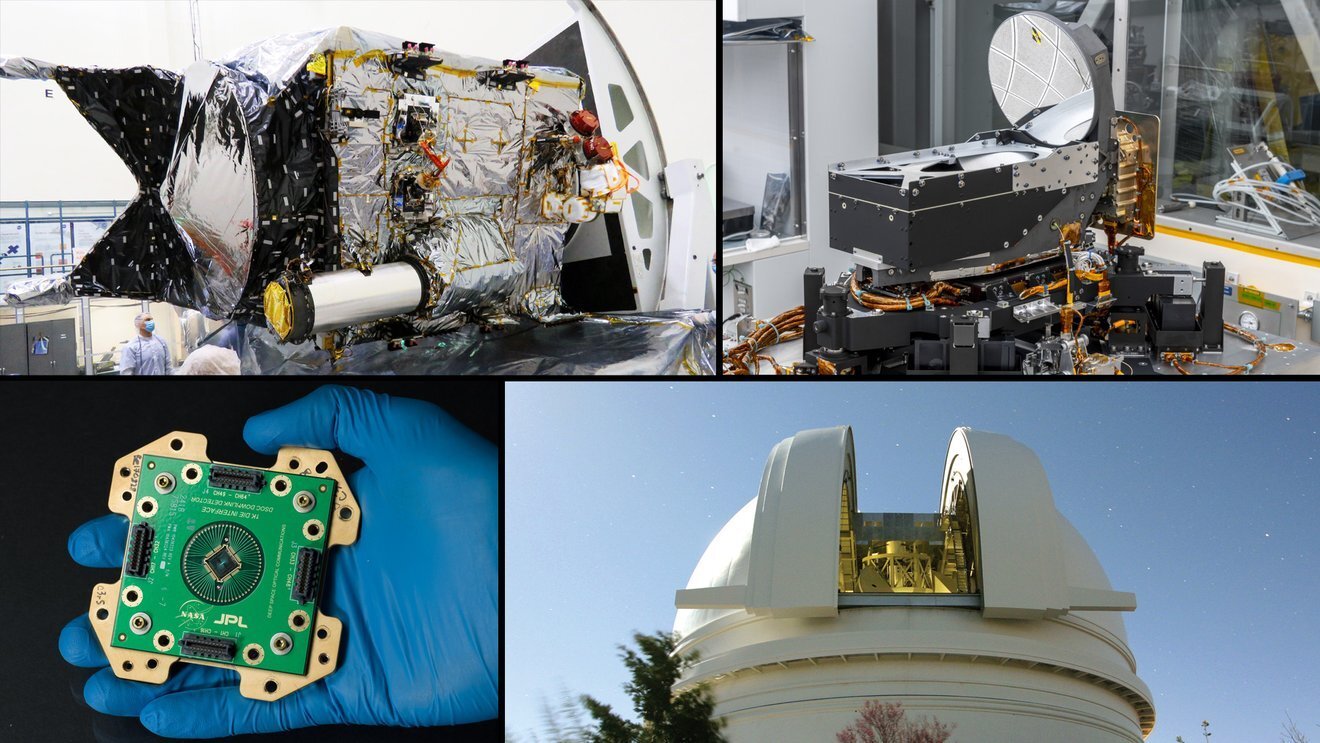NASA demos deep space optical communications

NASA's Deep Space Optical Communications (DSOC) experiment will showcase the use of laser or optical-based communications as far as Mars. The technology involves the use of equipment in space and on Earth, which includes a flight laser transceiver, two ground telescopes, and a high-power near-infrared laser transmitter. Despite the challenges of dealing with faint laser photon signals and a lag of over 20 minutes at the farthest distance, the experiment will offer a groundbreaking experience for transmitting higher data rates from deep space. DSOC will be launched on Oct. 12 as part of NASA's Psyche mission. It will pave the way for future missions to Mars by testing key technologies that would allow the transmission of denser science data and even stream video from the Red Planet.
It is important to know about the amazing technology demonstration that's happening. NASA is testing a new technology called DSOC which uses lasers to increase data transmission from deep space. Until now, NASA has been using only radio waves to communicate with missions that travel beyond the Moon. With optical communications, much like fiber optics replacing old telephone lines on Earth, we can expect much higher data rates throughout the solar system, with 10 to 100 times the capacity of state-of-the-art systems currently used by spacecraft. This will help us better enable future human and robotic exploration missions, as well as support higher-resolution science instruments.
The 200-inch (5.1-meter) Hale Telescope at Caltech's Palomar Observatory in San Diego County, California, has also been equipped with a special superconducting high-efficiency detector array to collect data sent from the flight transceiver. The tech demo involves equipment both in space and on Earth. While NASA's Psyche spacecraft relies on traditional radio communications for mission operations, the DSOC flight laser transceiver, which is an experiment attached to the spacecraft, features both a near-infrared laser transmitter and a sensitive photon-counting camera. The laser transceiver is designed to send high-rate data to Earth and receive a laser beam sent from Earth. However, it is just one part of the technology demonstration.
Since there is no dedicated infrastructure on Earth for deep space optical communications, two ground telescopes have been updated to communicate with the flight laser transceiver. The Optical Communications Telescope Laboratory located at NASA's Jet Propulsion Laboratory in Southern California has integrated a high-power near-infrared laser transmitter with the technology demonstration. The transmitter will deliver a modulated laser signal to DSOC's flight transceiver and serve as a beacon, or pointing reference, to enable accurate aiming of the returned laser beam back to Earth.
DSOC faces unique challenges as it aims to transmit data at a high rate over a distance of up to 240 million miles (390 million kilometers) during the first two years of Psyche's six-year journey to the asteroid belt. As Psyche travels further away from Earth, the laser photon signal weakens, making it increasingly difficult to decode the data. Furthermore, the photons take longer to reach their destination, resulting in a lag of over 20 minutes at the farthest distance of the tech demo. As the positions of Earth and the spacecraft are constantly changing as the photons travel, the DSOC ground and flight systems will need to adjust and point to where the ground receiver (at Palomar) and flight transceiver (on Psyche) will be when the photons arrive.
Advanced technologies will collaborate to ensure that the lasers are accurately targeted and that high-bandwidth data is transmitted from deep space. Precise pointing of the flight laser transceiver and ground-based laser transmitter is crucial. It is comparable to hitting a dime from a mile away while it is moving. Therefore, the transceiver must be isolated from vibrations that could nudge the laser beam off the target. Initially, Psyche will direct the flight transceiver toward Earth, while autonomous systems on the flight transceiver assisted by the Table Mountain uplink beacon laser will control the pointing of the downlink laser signal to Palomar Observatory.
JPL has developed a cryogenically cooled superconducting nanowire photon-counting array receiver, which is integrated into the Hale Telescope. The instrument is equipped with high-speed electronics that record the time of arrival of single photons, allowing the signal to be decoded. The DSOC team has even developed new signal-processing techniques to extract information from the weak laser signals that will have been transmitted over tens to hundreds of millions of miles.
NASA is working on an optical communications project that aims to revolutionize communication in space. In 2013, NASA conducted the Lunar Laser Communications Demonstration which resulted in record-breaking uplink and downlink data rates between Earth and the Moon. In 2021, a new project called Laser Communications Relay Demonstration was launched to test high-bandwidth optical communications relay capabilities from geostationary orbit, enabling spacecraft to communicate with Earth even without a direct line of sight. Additionally, NASA's TeraByte InfraRed Delivery system achieved the highest-ever data rate from a satellite in low-Earth orbit to a ground-based receiver in the last year.
The latest project, called DSOC, is taking optical communications beyond the Moon, paving the way for high-bandwidth communications in deep space. This has the potential to lead to high-data-rate communications that can support streaming and high-definition imagery. This technology could be crucial in enabling humanity's next giant leap when NASA sends astronauts to Mars.
POPULAR
- NASA predicts the Sun's corona behavior, revealing its mysteries using advanced computational methods
- Australia on track for unprecedented, decades-long megadroughts: Supercomputer modeling raises concern
- Revolutionizing precision agriculture: The impact of Transformer Deep Learning on water, energy demands

 How to resolve AdBlock issue?
How to resolve AdBlock issue?